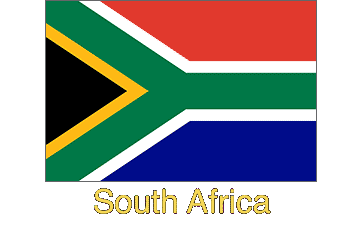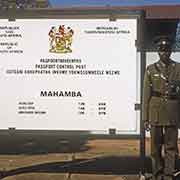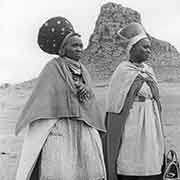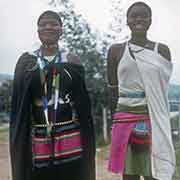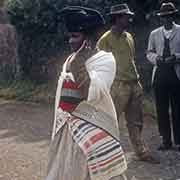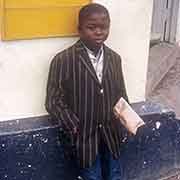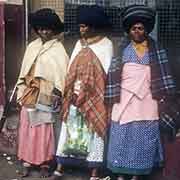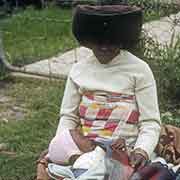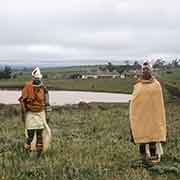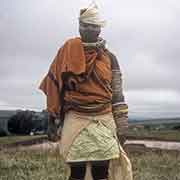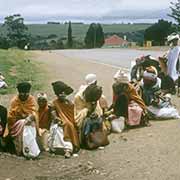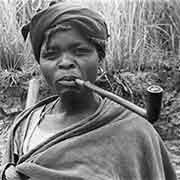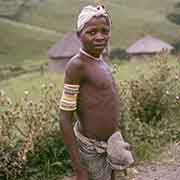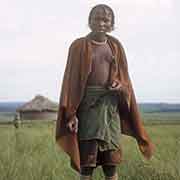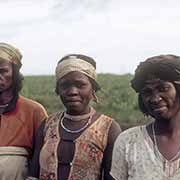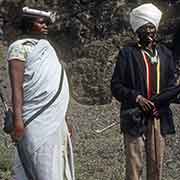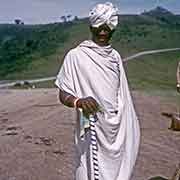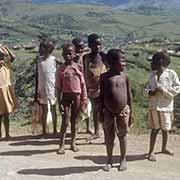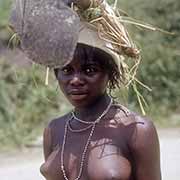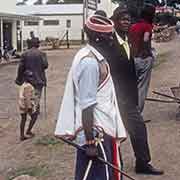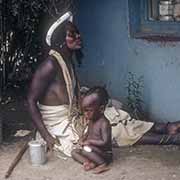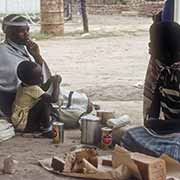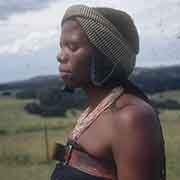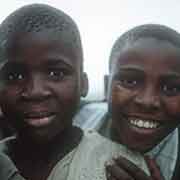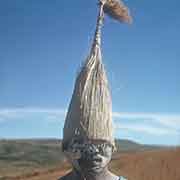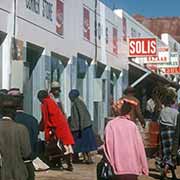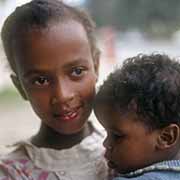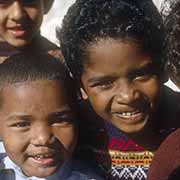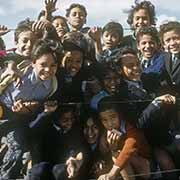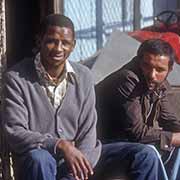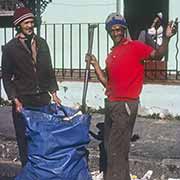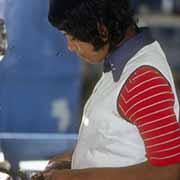Photos of the People of South Africa
The People of South Africa
During the period of Apartheid, people were classified as belonging to one of four defined race groups (Black, Whites, Coloureds and Indians or Asian). Even today, many people continue to use this classification. The overwhelming majority, almost 80%, is Black South African, also called “Bantu”, a word similar to that for “people” in many Bantu languages.
you may then send it as a postcard if you wish.
The Zulu and Xhosa peoples, both Nguni ethnic groups, are the most numerous. The 10-12 million Zulus live mainly in KwaZulu-Natal, and approximately eight million isiXhosa-speaking people in Eastern Cape Province. Both bravely resisted the encroachment of whites, Boers and English, on their territories. The Xhosas descended from various groups with their own kingdoms in the 19th century, like the Thembu, Gcaleka, Mpondo (Pondo) and Xesibe. The Mfengu (Fengu) were people of various ethnicities that had migrated and assimilated with the Xhosa. During the Apartheid era, the homelands of Ciskei and Transkei were set up to be made independent Xhosa states.
The Coloured population lived mainly in the Cape region: Cape Coloureds descended mostly from Dutch and Khoisan peoples; the latter was the pastoral Khoekhoe (Khoikhoi), called “Hottentots” by Europeans and hunter-gathering San, called “Bushmen”. One of those groups was the Griquas, who, like the Boers, formed commandos and migrated inland. In the 19th century, a group under their leader Adam Kok III settled in what became the town of Kokstad in KwaZulu-Natal, where their descendants still live.
The white South Africans descended from Dutch, English and other European settlers and are culturally and linguistically divided into Afrikaners and English speakers. The Afrikaans language is derived from 17th-century Dutch spoken by the early settlers and heavily influenced by the languages with which it was surrounded; it became a creole partially, with simplified grammar, and its sound system changed from Dutch as well.


